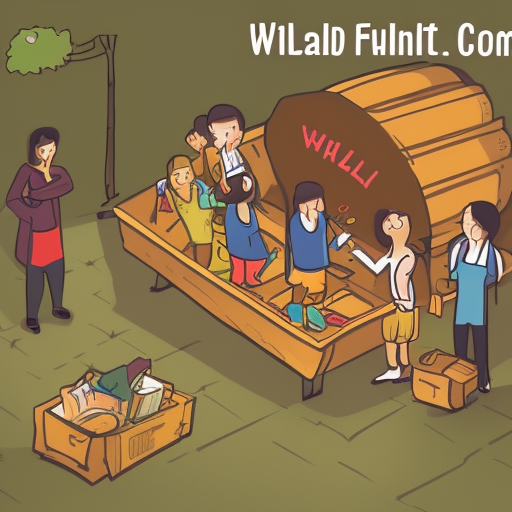
This question resolves positively if GiveWell gives a grant or publishes a recommendation that grants be given to fund community health promoters or before December 31, 2026. Community health promoters are those selling products related to healthy living and increased productivity such as treatments for malaria, diarrhea and pneumonia, soap, feminine hygiene items, solar lanterns, high efficiency cookstoves and more eg those run by Living Goods. Or if a charity undertaking the same work is designated a "Top Charity" or a recipient of "All Funds" before the deadline. This resolves according to a statement from GiveWell or a credible news organisation.
It resolves "No" otherwise.
The most likely resolution mechanism is that GiveWell writes "yes" in the column "Have we recommended one or more grants to support this program?" in the “Community health promoters as run by Living Goods” row of the GiveWell program reviews spreadsheet (https://docs.google.com/spreadsheets/d/1TG7WRU85p1SEjir-5qvIEg4kVG9a4Lnzdgwcub8aKSs/edit#gid=0) or a spreadsheet that supersedes it. The funds must go towards community health providers, not a charity that largely does other work.
-- Note --
Can you find issues with this question. It's kind of flawed but I don't know how to fix it.
-- Background --
GiveWell has recommended grants to over 10 charities over the years. They are currently investigating 12 charity areas with other areas of research in the pipeline including Community health promoters as run by Living Goods.
The following sections are quoted from GiveWell’s explanation of the topic.
“Living Goods runs a network of Community Health Promoters (CHPs) who sell health and household goods door-to-door in their communities in Uganda and Kenya and provide basic health counselling.
CHPs provide health education and earn a living selling health and other “life-changing” and money-saving products home-to-home in their communities. Living Goods provides a loan to each CHP to start and operate her own business. The CHP makes an income by selling products related to healthy living and increased productivity such as treatments for malaria, diarrhea and pneumonia, soap, feminine hygiene items, solar lanterns, high efficiency cookstoves and more. CHPs are also trained in Integrated Community Case Management (ICCM), providing diagnosis and treatment for diarrhoea, malaria and pneumonia. They aim to reduce under-five mortality by focusing on treatments for pneumonia, diarrhoea, malaria, follow ups and referrals, providing prenatal care, encouraging delivery in a facility, and improving newborn health through postnatal visits.
CHPs are overseen by Branch Managers. Branch Managers are expected to visit or talk to each CHP at least once per month and collect data from CHPs on pregnancy registrations, treatments provided to children under 5, and other activities.
The main evidence for Living Goods’ impact is a randomised controlled trial that found that the program caused a 27% reduction in under-5 mortality. The full details of this study are not yet publicly available. We have some questions about this study that we cannot yet discuss. We plan to publish a review of the study once the authors have published the full report.
Living Goods says that it “aim[s] to reduce under-five mortality by focusing on an ICCM+ approach, [which] includes quality diagnosis and treatments for pneumonia, diarrhoea, malaria, encouraging prevention and healthy behaviours, and improving maternal and newborn health, especially in the perinatal period.” We have not completed recent evidence reviews for artemisinin-combination therapy (ACT) for malaria (older review of the program here), antibiotics to treat pneumonia or oral rehydration salts to treat diarrhoea, but we believe that there is relatively strong evidence to support these programs.
Overall, the evidence from our site visit seemed broadly consistent with the possibility that Living Goods is improving access to healthcare and quality of healthcare in the areas where it works. For example, it may be increasing access to essential medication by having lower prices than competitors and a convenient delivery model, and it may be improving quality of care by building trust with its customers. However, we put little weight on this evidence because it is based on limited and potentially non-representative information.
Two GiveWell staffers have entered parameters for the various assumptions to derive "pessimistic," "base case," and "optimistic" estimates of Living Goods' cost per life saved (similar in concept to Living Goods' "low case," "mid case," and "best case"). The two staffers used somewhat different assumptions but generated similar estimates:
Pessimistic: About $37,000 per life saved
Base case: About $10,000 per life saved
Optimistic: About $4,400 per life saved
Details in this spreadsheet [https://www.givewell.org/files/DWDA%202009/LivingGoods/GiveWell%20estimates%20of%20Living%20Goods%20cost%20effectiveness%20%28November%202014%29.xlsx\]. In the future, we may ask Living Goods for some additional information that will help us improve the model. In the future, we may also conduct further research to help us improve the model”